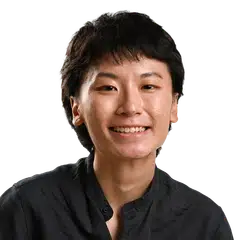Meet the CAAS officer who helmed revision of building height limits near airports across the world
Sign up now: Get ST's newsletters delivered to your inbox

Mr Fadzil Mohamed Jakaria joined the task force when it was first formed in 2015.
ST PHOTO: DESMOND WEE
Follow topic:
- Mr Fadzil chaired an ICAO task force, created in 2015, to review building height limits near airports, replacing the outdated "one-size fits all" approach.
- The ten-year review required data collection, consensus from 14 member states, and agreement from ICAO's 193 members.
- Following the August approval, Singapore's URA will study potentially allowing taller buildings, considering infrastructure and living environments.
AI generated
SINGAPORE – It took 10 years, but civil aviation expert Fadzil Mohamed Jakaria finally saw his hard work come to fruition when the International Civil Aviation Organisation (ICAO) announced revisions to height limits of buildings near airports on March 28.
The long journey, said the Civil Aviation Authority of Singapore (CAAS) officer and chairman of the ICAO task force reviewing building height restrictions around airports, was “extremely painful”.
ICAO is a United Nations agency that oversees global aviation standards and practices.
The review took 10 years as it involved compiling data for different types of aircraft, flight performance, flight procedures at various airports, as well as the availability of navigational equipment, to make a case for customised regulations that cater to the changing needs of airports.
Besides all 14 member states in the task force needing to contribute to the review, the 193 ICAO member states also had to come to a consensus on the changes.
“But in the end, when you see things get approved and, at the same time, people see benefits and gains from it, it is rewarding that you are part of this whole process,” Mr Fadzil added.
With the change, buildings located around airports in Singapore can soon be built to greater heights
The Government said the move could open up opportunities for businesses and has the potential to increase the overall housing supply.
The revised civil aviation height restrictions will be adopted here in August. The Government will subsequently study how buildings in some areas can be built taller in the future, the Urban Redevelopment Authority of Singapore said on June 25.
Mr Fadzil, who is head of the obstacle limitation surfaces (OLS) – referring to imaginary surfaces around airports that define the volume of airspace that must be kept free of obstacles – and aerial activities team at CAAS, joined the task force when it was first formed in 2015. CAAS took over the reins from the United States’ Federal Aviation Administration in 2017.
Mr Fadzil said Singapore’s involvement in the task force was important, especially to spotlight the constraints it is facing in the intensification of land use.
Relaxing building height limits could help free up space on the ground for other uses. And technological advancements in aircraft, improvements in air navigation systems, and the changes in types of flight operations mean modern planes need less airspace for take-off and landing.
Mr Fadzil pushed for a more efficient way to safeguard airspaces, as he felt the “one-size-fits-all” OLS regulations first developed in the 1950s were no longer suitable.
For instance, the Seletar and Changi airports have different aircraft and flight operations, and imposing the same height restrictions on buildings in the vicinity did not make sense, he said, adding that regulations could be adapted to their specific needs.
Mr Fadzil said convincing others on the task force had been a “huge task”. He learnt how to engage differently with representatives from various states – some preferred formal settings, while others enjoyed casual chats over dinner.
“For consensus-building, this is something we’re proud of – that a small state like Singapore is able to get other states to come on board something that is very evolutionary,” he added.
And over the past decade, Mr Fadzil has been juggling his day job at CAAS with his responsibilities in the ICAO task force.
He clocked at least three 24-hour flights a year to Montreal, Canada, to attend key in-person meetings at the ICAO headquarters. Virtual meetings took place once every two weeks in the middle of the night for him, as Montreal is 12 hours behind Singapore.
Recounting the moment in Montreal when the task force first knew that the proposed revisions had been approved in March, Mr Fadzil said they were “extremely excited” and threw a party to celebrate.
His focus will now shift to conducting courses to teach trainers how to transition to the new OLS regime, before they spread the information to other ICAO members.
Singapore joined ICAO in 1966, a year after gaining independence. On July 4, 2025, CAAS chairman Edmund Cheng and CAAS director-general Han Kok Juan presented a sculpture to Mr Salvatore Sciacchitano, president of the ICAO Council, in celebration of their organisations’ 59-year partnership.
The Republic has been a member of the ICAO Council – the organisation’s policy and decision-making governing body – since 2003, and a member of the air navigation commission since 2006. It currently serves on 17 ICAO panels and nearly 100 expert panels, holding 21 leadership positions.


